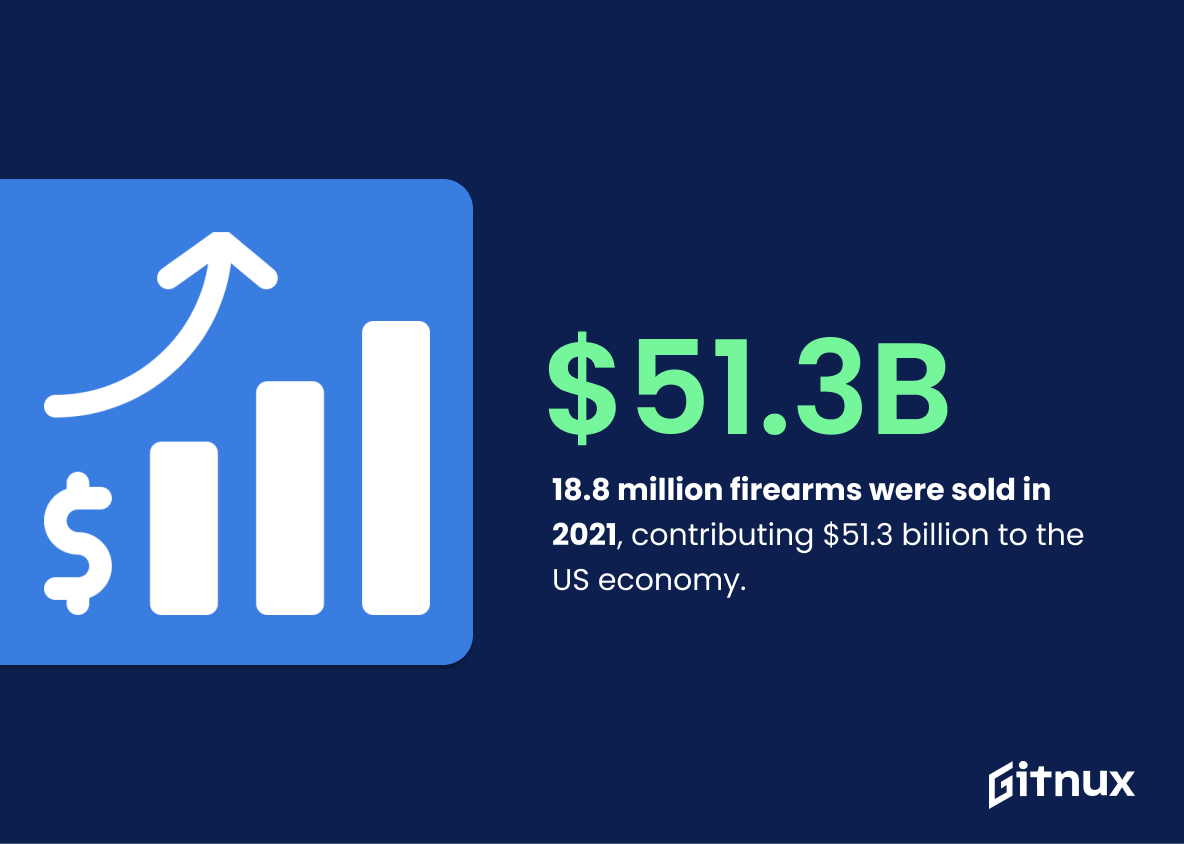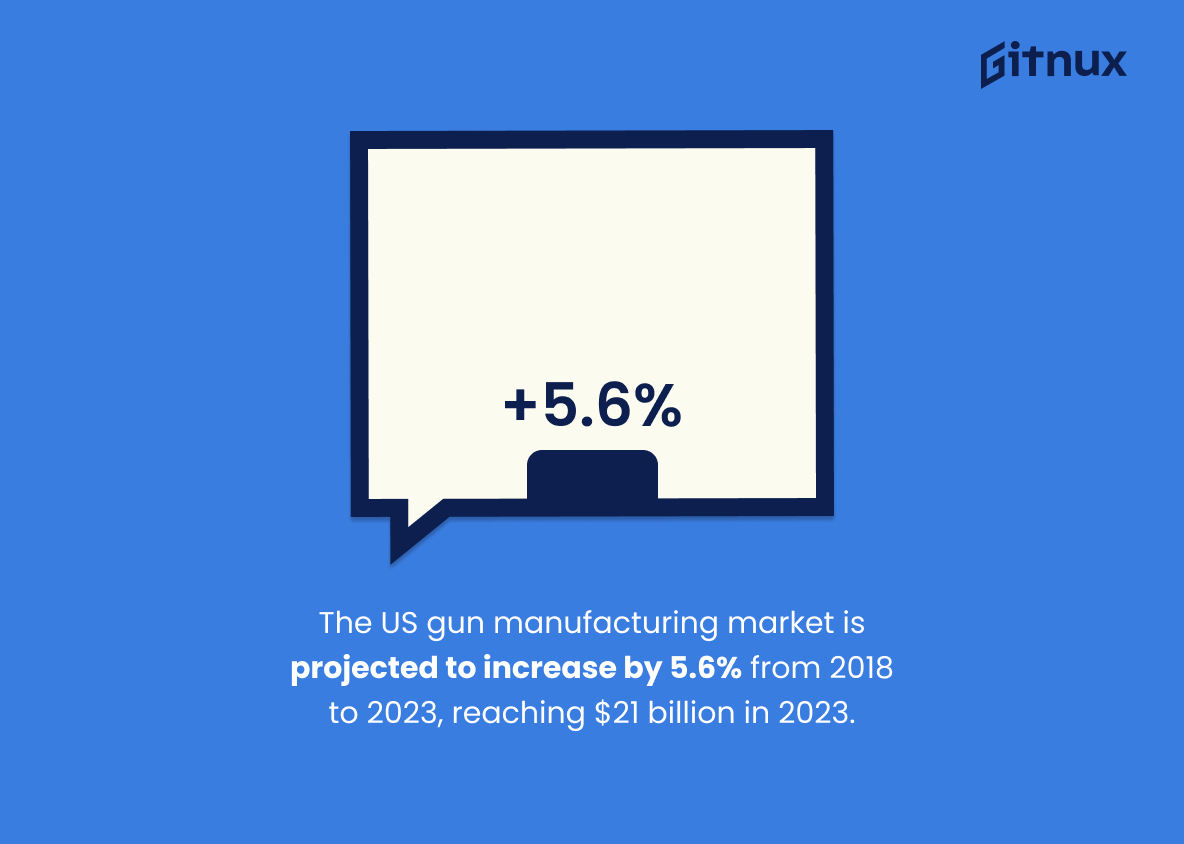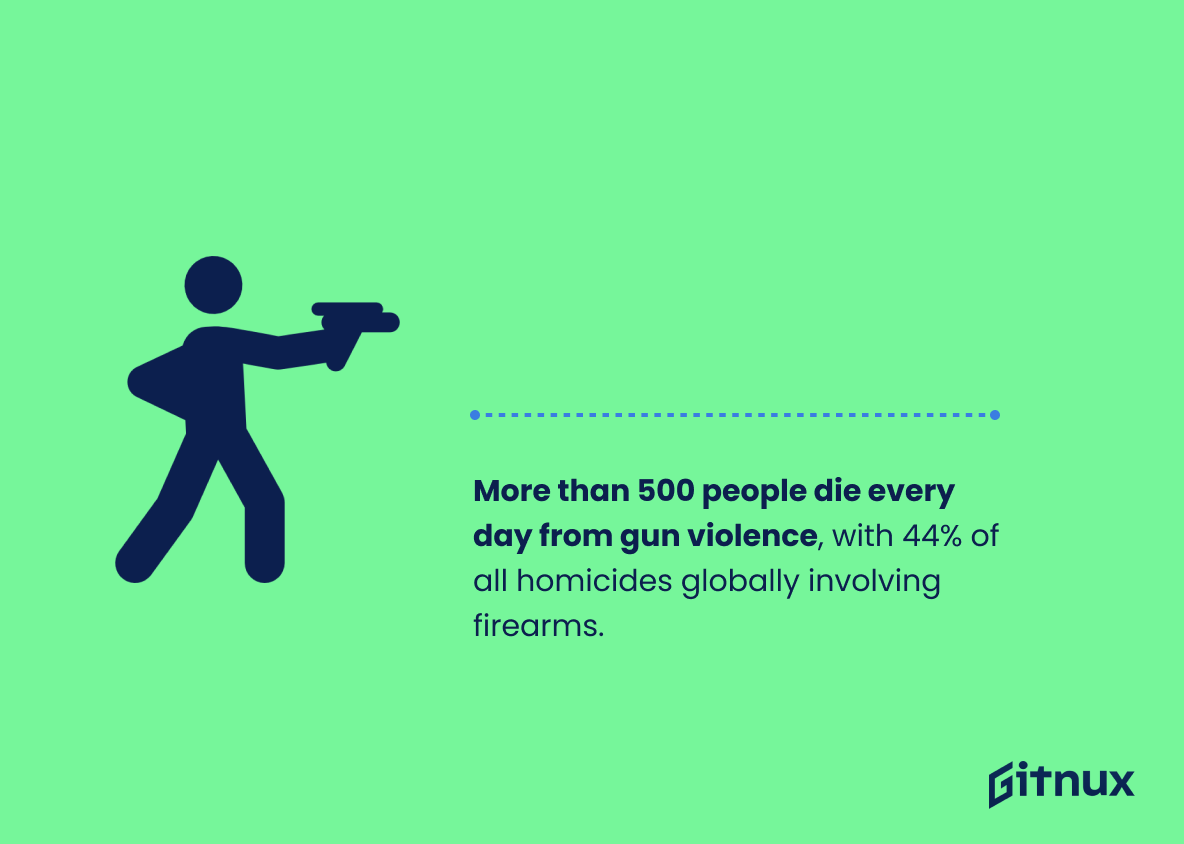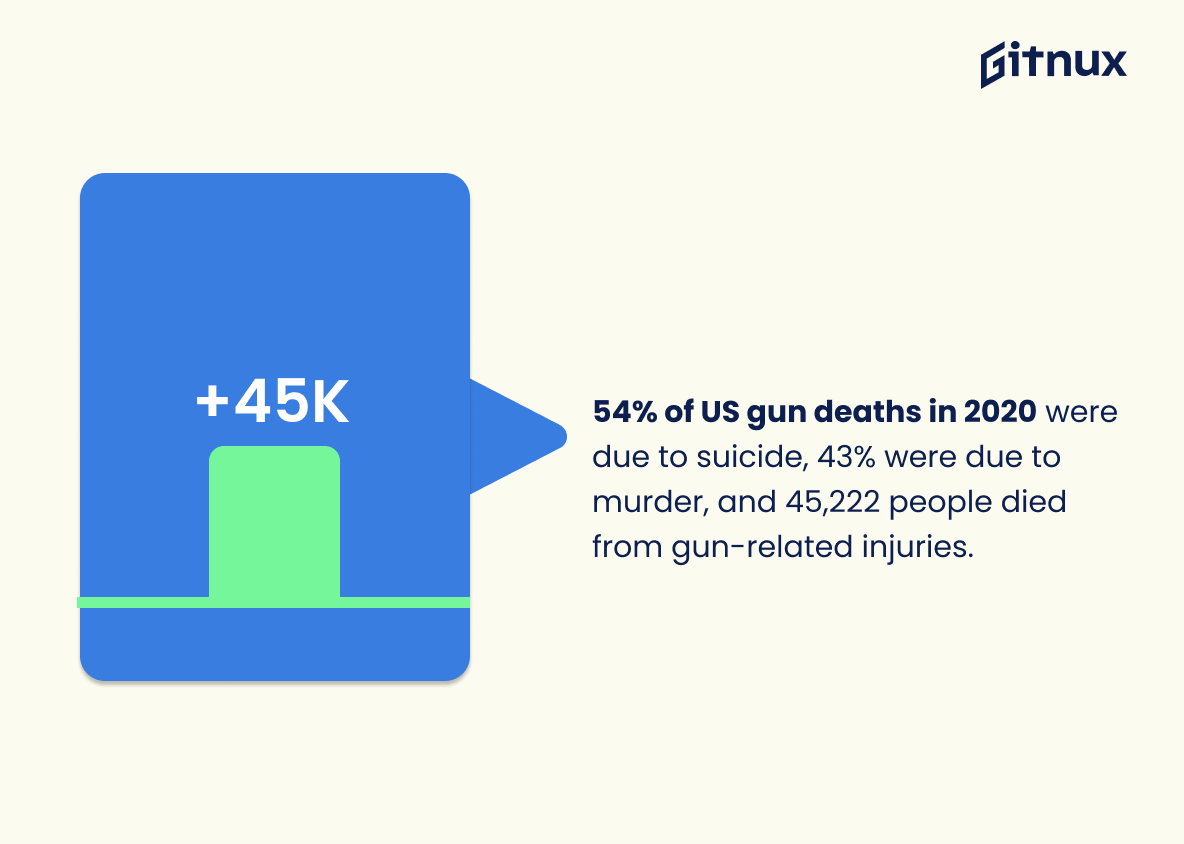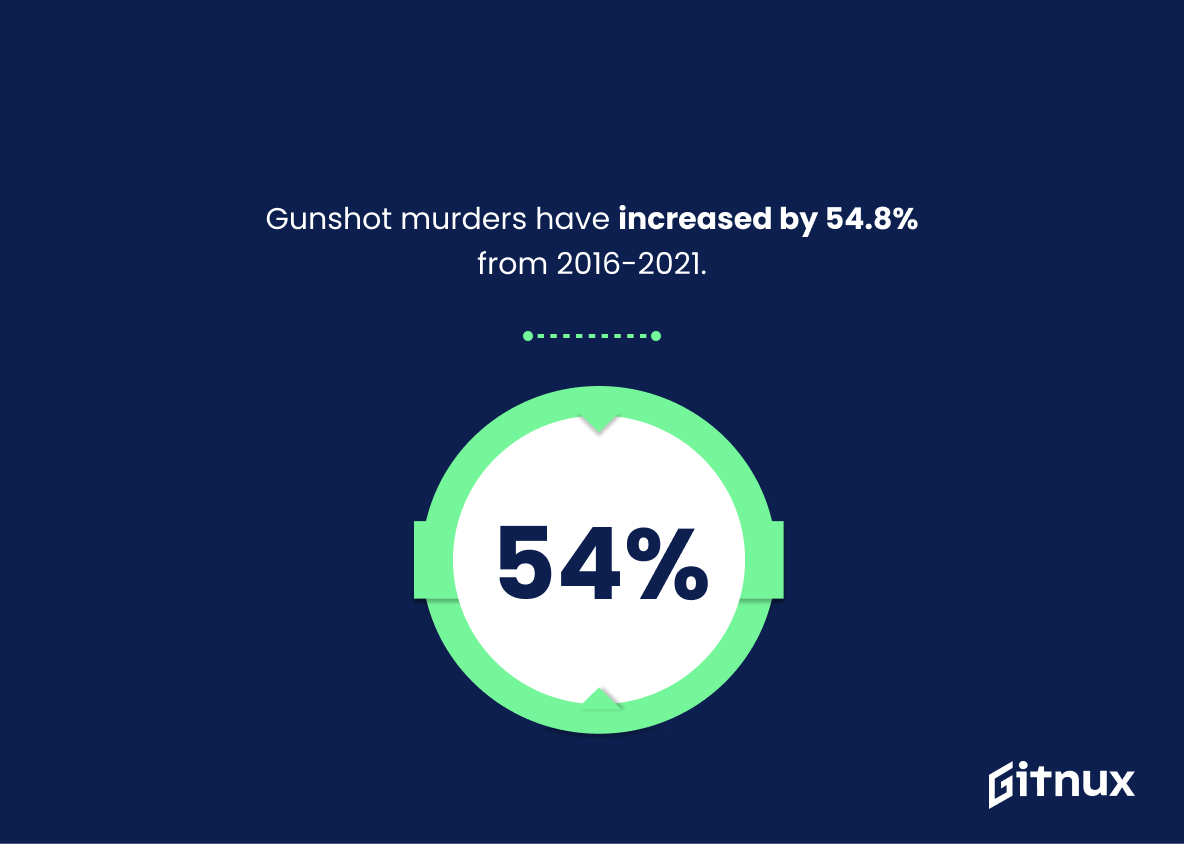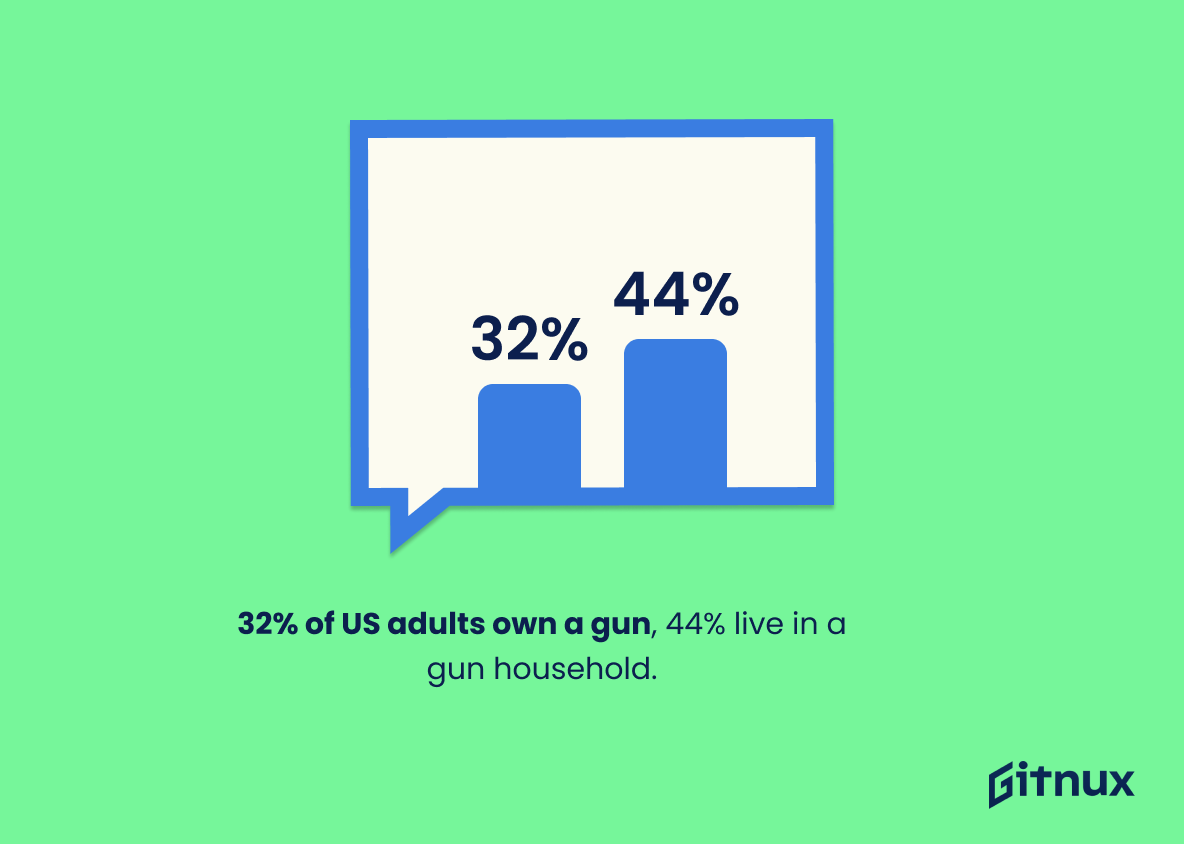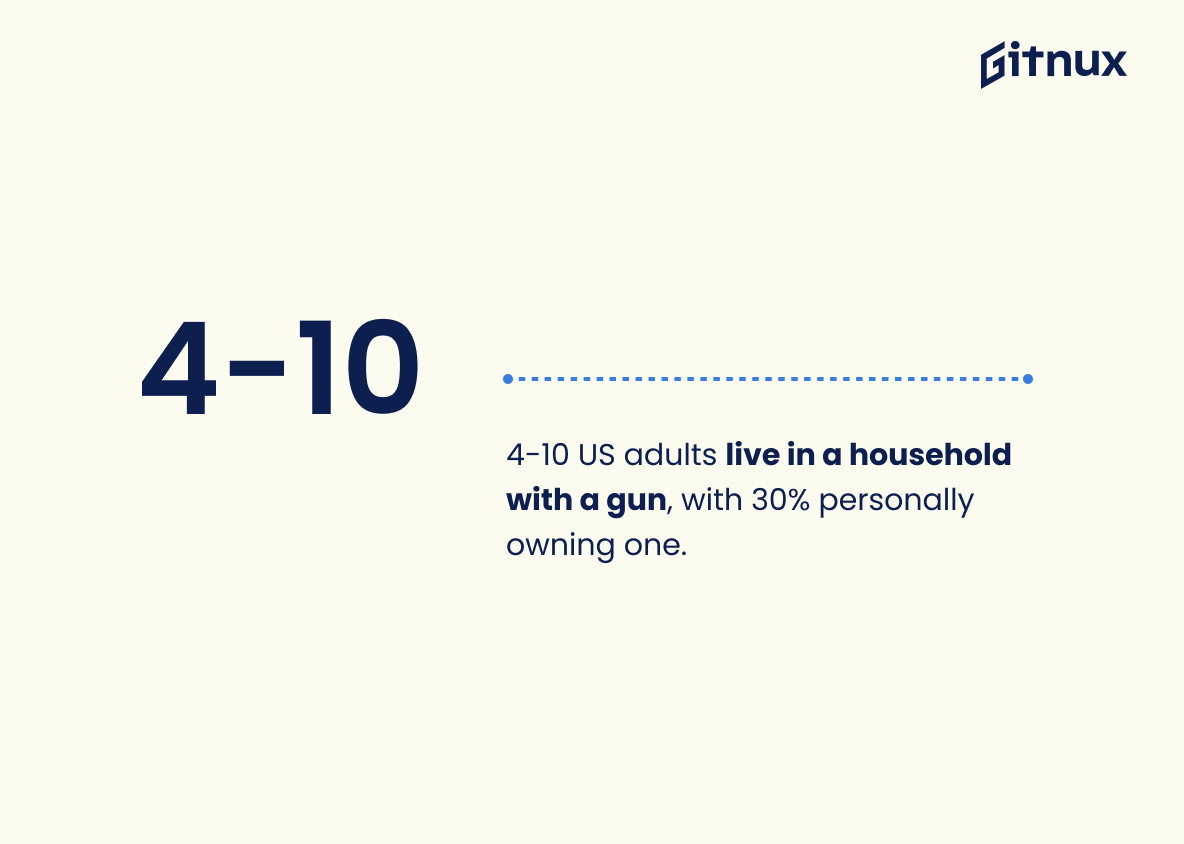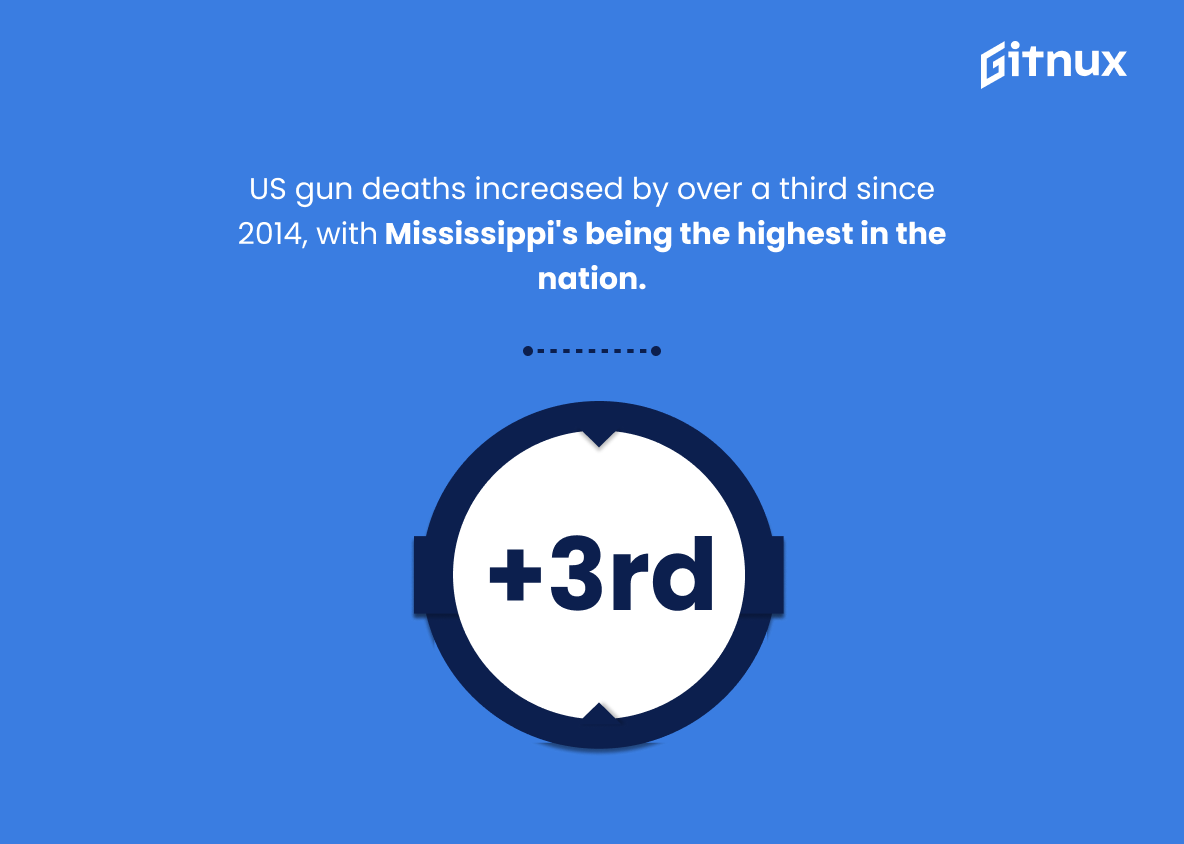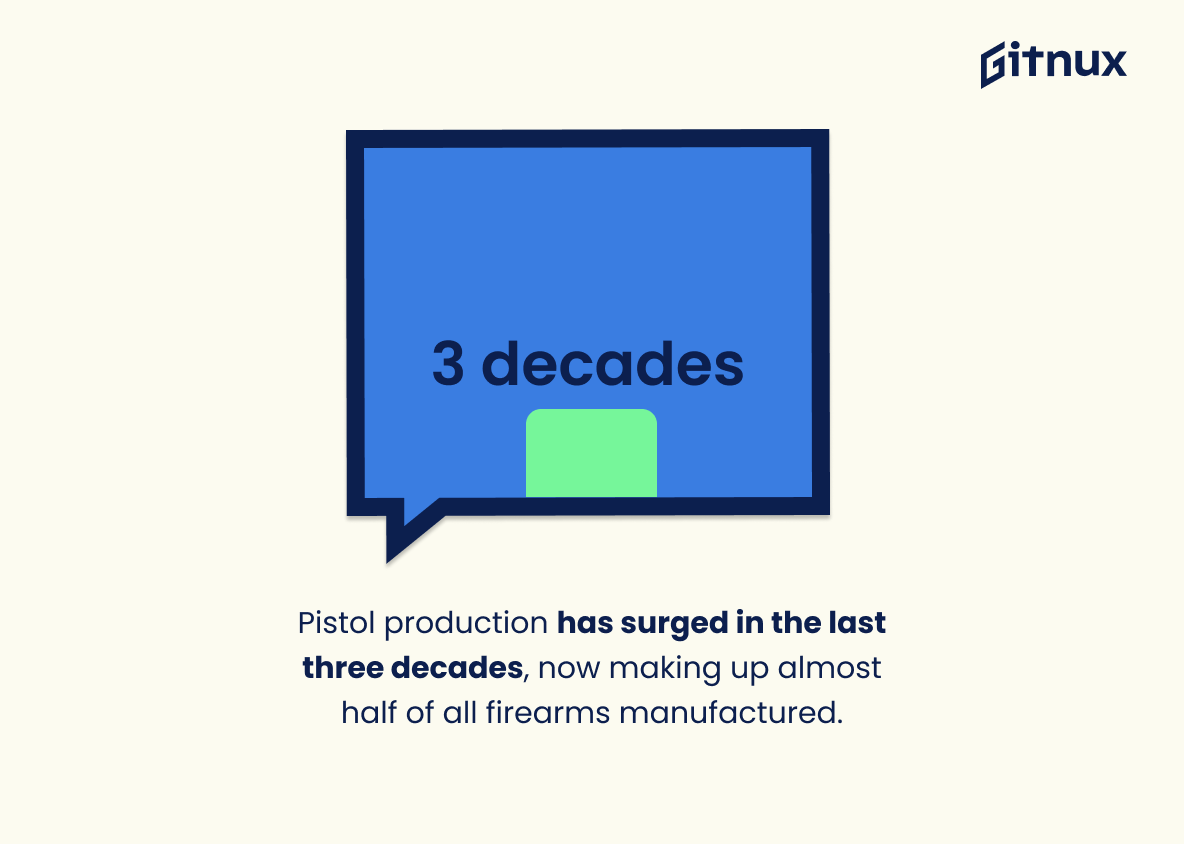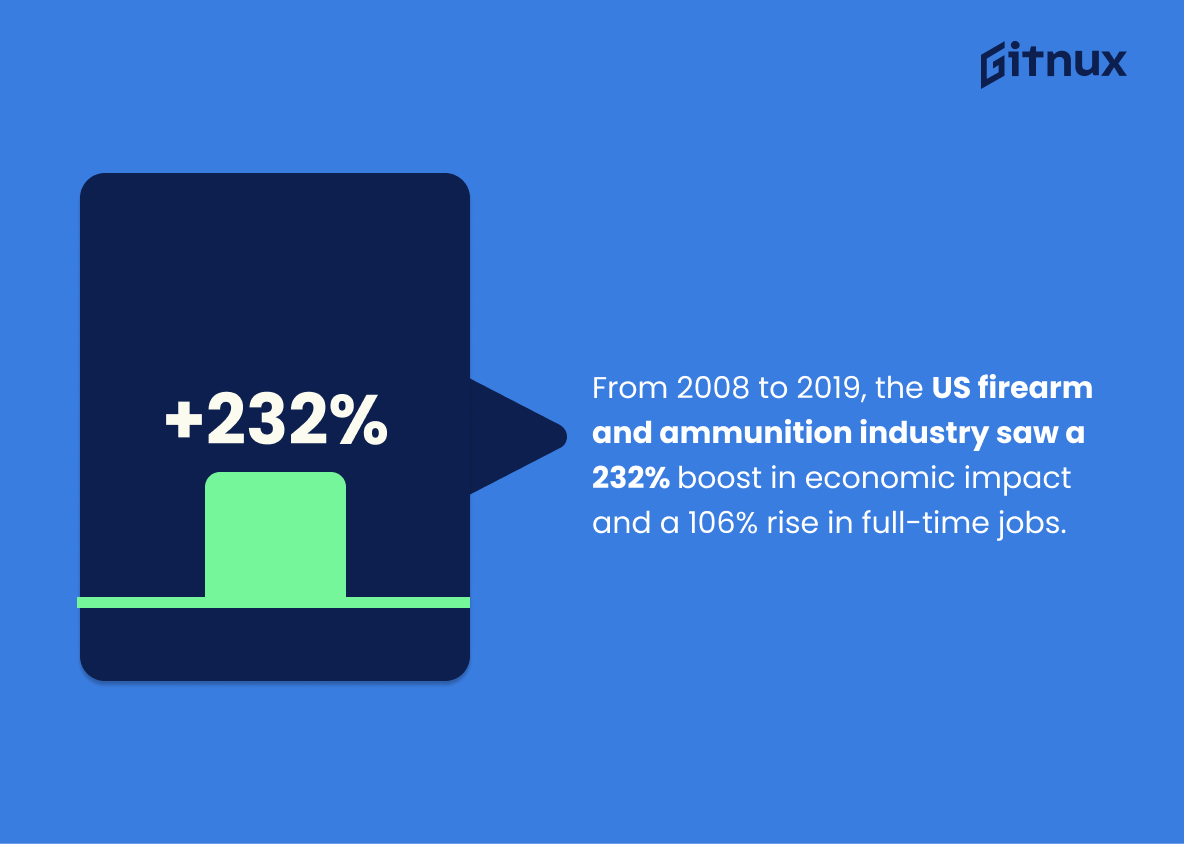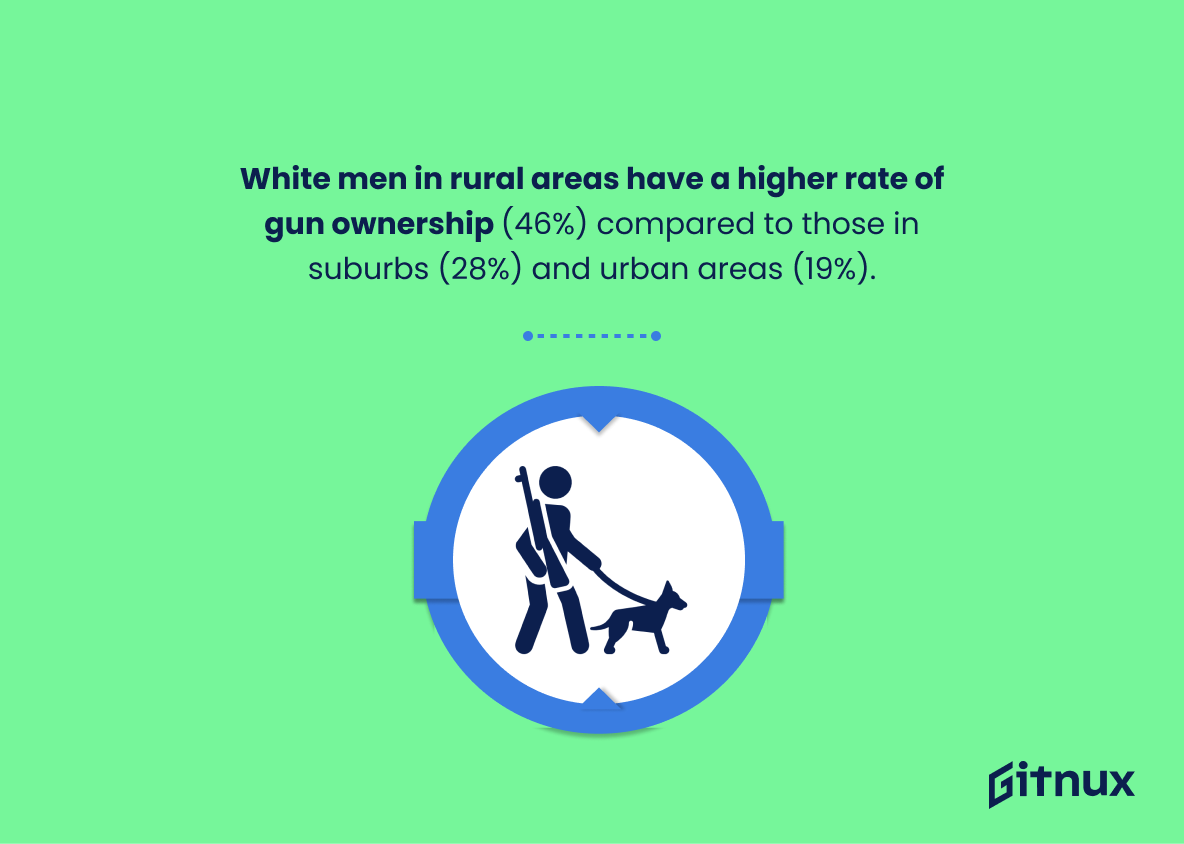The gun industry is a major player in the United States economy, and the statistics surrounding it are fascinating. From the number of guns manufactured to the number of jobs created, the gun industry has a significant impact on the country.
In this article, we’ll take a look at some of the most interesting gun industry statistics, and what they mean for the future of the industry. We’ll also discuss the implications of these statistics for gun owners, and for the country as a whole. So, let’s dive in and explore the gun industry by the numbers.
Gun Industry: Most Important Statistics
More than 500 people die every day from gun violence, with 44% of all homicides globally involving firearms.
4-10 US adults live in a household with a gun, with 30% personally owning one; 44% of republicans own a gun, while 20% of democrats own guns.
Gun Industry: Statistics Overview
18.8 million firearms were sold in 2021, contributing $51.3 billion to the US economy, with an average of 7-9 million guns manufactured annually between 2017-2022.
This shows the significant economic impact of the gun industry in the US. It also shows the high demand for firearms, which is likely to remain steady in the coming years.
The US gun manufacturing market size is expected to grow by 5.6% from 2018-2023, with a market size of $21 billion in 2023.
The US gun manufacturing market is growing, which is important to understand the current and future state of the gun industry.
It also provides insight into the economic impact of the gun industry and how it is likely to grow in the near future.
More than 500 people die every day from gun violence, with 44% of all homicides globally involving firearms.
This highlights the serious implications of gun violence and the need for further research and regulation in the gun industry.
It also serves to emphasize the need for gun control and the importance of understanding the impact of gun violence on society.
54% of US gun deaths in 2020 were due to suicide, 43% were due to murder, and 45,222 people died from gun-related injuries.
This highlights the need for more effective gun control measures to reduce the number of gun-related deaths in the US.
It also shows the need for more research into the causes of gun violence and suicide in order to develop better prevention strategies.
Gunshot murders have increased by 54.8% from 2016-2021.
The number of people being killed by guns is increasing, which could be an indicator of a need for more regulation or safety measures in the gun industry.
32,1% of murders in South Africa during 2015/16 were committed with a firearm, which is higher than the global average of 41%.
This matters because it highlights the need for effective gun control legislation, such as the Firearms Control Act, which has been proven to save lives.
32% of US adults own a gun, while 44% live in a gun household; 50% of Republicans own firearms, while 18% of Democrats are least likely to own guns.
There are differences in gun ownership between Republicans and Democrats, which can be used to inform the marketing strategies of gun manufacturers and retailers. It also shows the overall prevalence of gun ownership in the US, which can be used to inform the production and distribution of firearms.
4-10 US adults live in a household with a gun, with 30% personally owning one; 44% of republicans own a gun, while 20% of democrats own guns.
There is a political divide between gun ownership in the US. It also shows the prevalence of gun ownership in the US, which can help inform the Gun Industry on how to market their products.
The US has 30 times more gun homicides per 100 people than the UK.
This shows the stark difference between the US and UK in terms of gun violence. It is a reminder that the US has a much higher rate of gun violence than other countries, and that the gun industry needs to take steps to reduce gun violence in the US.
Gun deaths in the US have risen by more than a third since 2014, with Mississippi recording the highest mortality rate of 26.8% per 100,000 people in 2020.
This highlights the severity of the issue of gun deaths in the US. It shows that the number of deaths has been steadily increasing, indicating that more needs to be done to address the issue and reduce the number of deaths.
This is particularly important in the context of gun industry statistics, as it shows the need for greater regulation and control of firearms in order to reduce the number of deaths and make the industry safer.
Gun manufacturing saw a peak of 11.5 million firearms produced in 2016, but has since fluctuated between 7 and 9 million per year. This is still significantly higher than the early 2000s, when only 3 million firearms were produced annually. Half of U.S. firearm manufacturers produce less than ten guns per year, and the average salary for a firearms industry employee is between $38,000 and $40,000.
This makes the significant growth in the gun industry over the past two decades clear. It also highlights the disparity between the larger manufacturers and the smaller ones, as well as the salaries of those employed in the industry.
Pistol production has increased significantly over the past three decades, now accounting for nearly half of all firearms produced.
This shows the increasing demand for pistols, which has become the most commonly produced firearm type.
This indicates that the gun industry is adapting to the changing needs of consumers, and that pistols are becoming the preferred firearm type.
The firearm and ammunition industry in the US has seen a dramatic increase in economic impact and job growth from 2008 to 2021, rising from $19.1 billion to $70.52 billion and from 342,330 to 375,819 jobs respectively.
This is an important indicator of the health of the gun industry and the overall economy in the US.
The firearm and ammunition industry in the US experienced a 232% increase in economic impact and a 106% increase in full-time equivalent jobs from 2008 to 2019, with an average of $56,400 in wages and benefits.
This demonstrates the economic impact of the gun industry and the number of jobs it provides, which can be beneficial to local economies.
Gun ownership is more common among white men, particularly those living in rural areas (46%), compared to those living in suburbs (28%) and urban areas (19%).
It is especially important to note that 67% of gun owners cite protection as a major reason for owning a gun. This data is important for understanding the gun industry, as it provides insight into who is buying guns and why.
Overall, gun prevalence is higher in the US than in other parts of the country, with 34% of families with children under 12 having a gun in their household.
There is a high demand for guns in the US, which could be beneficial for the gun industry.
The US is the world’s largest exporter of arms, with Saudi Arabia being the main recipient at 22%, and the five largest arms exporters (US, Russia, France, Germany, and China) accounting for 75% of global exports.
This shows the US’s prominent role in the global arms trade, and the influence of the US on the global arms market.
It also shows the importance of Saudi Arabia as a recipient of US arms exports, and the importance of the five largest arms exporters in the global arms market.
The United States is the world’s largest arms exporter, responsible for 38.6% of international arms sales between 2017 and 2021, up from 32.2% between 2012 and 2016.
This increase in arms exports is important as it demonstrates the continuing strength of the global gun industry and the US’s role in it.
In 2011, there were 11,101 firearm homicides, a 39% decrease from 1993, and 8% of all violence was committed with a firearm, down from 9% in 1993.
This decrease in firearm homicides and violence is important to note as it shows a decrease in the use of firearms for violence, which is an important statistic to consider when discussing the gun industry.
In 2020, 54% of all gun-related deaths in the U.S. were suicides and 43% were murders.
This highlights the prevalence of gun-related deaths in the U.S. and the need for greater regulation of the gun industry to reduce these deaths.
Conclusion
In conclusion, the gun industry is a complex and ever-evolving industry. The statistics presented in this blog post are a snapshot of the current state of the gun industry.
While the industry has seen some fluctuations in recent years, it remains a major economic force in the United States. As the gun industry continues to evolve, it will be important to keep track of the latest statistics to better understand the industry’s impact on the economy and society.
References
1 – https://www.zippia.com/advice/firearm-industry-statistics/#:~:text=Across%20the%20United%20States%2C%2018.8,own%20at%20least%20one%20firearm.
2 – https://www.ibisworld.com/industry-statistics/market-size/guns-ammunition-manufacturing-united-states/
3 – https://www.amnesty.org/en/what-we-do/arms-control/gun-violence/
4 – https://www.pewresearch.org/fact-tank/2022/02/03/what-the-data-says-about-gun-deaths-in-the-u-s/
5 – https://businesstech.co.za/news/lifestyle/642165/south-africas-gun-violence-epidemic/#:~:text=The%20number%20of%20people%20murdered,increased%20to%2042%25%20in%202021.
6 – https://www.saferspaces.org.za/understand/entry/gun-violence
7 – https://news.gallup.com/poll/264932/percentage-americans-own-guns.aspx
8 – https://www.pewresearch.org/fact-tank/2021/09/13/key-facts-about-americans-and-guns/
9 – https://gun-control-network.org/press/us-uk-comparative-data/#:~:text=The%20rate%20of%20gun%20ownership,currently%200.03%20in%20Great%20Britain.
10 – https://www.nationalworld.com/news/world/gun-crime-statistics-country-number-us-deaths-compares-uk-rest-world-3712552
11 – https://www.zippia.com/advice/firearm-industry-statistics/
12 – https://www.visualcapitalist.com/30-years-of-gun-manufacturing-in-america/
13 – https://sgbonline.com/firearm-industry-economic-impact-rises-269-percent-since-2008/
14 – https://www.gameandfishmag.com/editorial/economic-impact-of-gun-industry-up-232-since-08/389983
15 – https://www.pewresearch.org/social-trends/2017/06/22/the-demographics-of-gun-ownership/#:~:text=White%20men%20are%20especially%20likely,is%20particularly%20pronounced%20among%20whites.
16 – https://www.pewresearch.org/fact-tank/2014/07/15/the-demographics-and-politics-of-gun-owning-households/
17 – https://www.amnesty.org/en/latest/press-release/2019/08/killer-facts-2019-the-scale-of-the-global-arms-trade/
18 – https://www.statista.com/chart/18417/global-weapons-exports/
19 – https://bjs.ojp.gov/content/pub/pdf/fv9311.pdf
20 – https://www.pewresearch.org/fact-tank/2022/02/03/what-the-data-says-about-gun-deaths-in-the-u-s/
